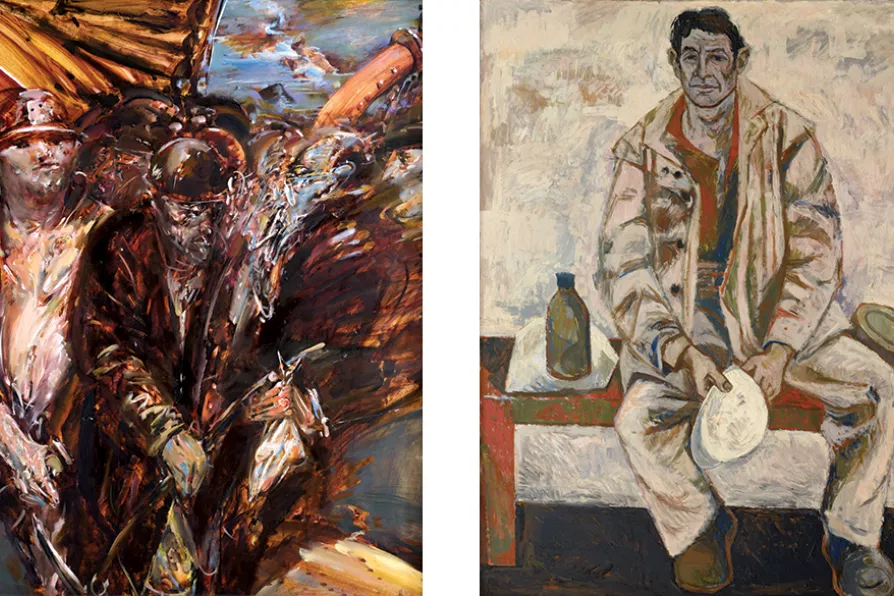JOE GILL speaks to the Palestinian students in Gaza whose testimony is collected in a remarkable anthology

 SUPERIOR: (L to R) Working day of a miner by Frank Ruddigkeit, 1986; Team Leader of Wismut by Dieter Beriech, 1966
[DIK/Andreas Kamper]
SUPERIOR: (L to R) Working day of a miner by Frank Ruddigkeit, 1986; Team Leader of Wismut by Dieter Beriech, 1966
[DIK/Andreas Kamper]
THE Wismut mine (the Soviet-German Joint Stock Company Wismut) was set up in 1946 after the war to supply uranium for the Soviet nuclear programme. It became the world’s fourth largest producer of uranium between 1946 and 1990. It was located in Saxony, in the Soviet occupation zone of Germany which, from 1949 onwards, became the territory of the German Democratic Republic (GDR).
As one can imagine, working in this mine was dirty, dangerous and demanded heroic efforts from those who were prepared to work there, although the work was well remunerated. During GDR times, the mine became symbolic for selfless working-class endeavour.
With the launch of the ruling Socialist Unity Party’s new cultural programme The Bitterfeld Path in 1959, artists and writers were encouraged to spend time in factories and workplaces in order to establish a genuine rapport between themselves and workers and to help overcome the gulf between the world of manual labour and that of artistic creation.

NICK MATTHEWS recalls how the ideals of socialism and the holding of goods in common have an older provenance than you might think

JOHN GREEN observes how Berlin’s transformation from socialist aspiration to imperial nostalgia mirrors Germany’s dangerous trajectory under Chancellor Merz — a BlackRock millionaire and anti-communist preparing for a new war with Russia












